Explore the captivating history of silk production in ancient China in [- Unveiling the Secrets: How Was Silk Made in Ancient China?]. Delve into the intricacies of sericulture, from mulberry farming and silkworm cultivation to the delicate art of weaving, and discover the ingenuity and artistry of ancient Chinese artisans. Learn how this luxurious fabric, once reserved for royalty, transformed into a global treasure, shaping fashion, trade, and cultural exchange for centuries. Embark on a journey through time to uncover the secrets of China’s ancient silk-making prowess.
Key Takeaways:
- Silk was highly prized and originated in ancient China.
- Sericulture, the process of making silk, involves raising silkworms on mulberry leaves, harvesting their cocoons, and unraveling the silk fibers.
- Silkworms are fed mulberry leaves for one month until they spin cocoons.
- The cocoons are steamed to kill the growing moth and then rinsed in hot water to loosen the threads.
- Different colored silk was achieved by feeding silkworms different types of mulberry leaves.
- Ancient Chinese artisans were extremely skilled at producing silk.
- Silk was used for the production of clothing, decorative purposes, and other luxury items.
- The silk trade was an important part of ancient China’s economy and culture.
- Silk production in ancient China was a complex and impressive process that produced a highly valued commodity.
How Was Silk Made In Ancient China?
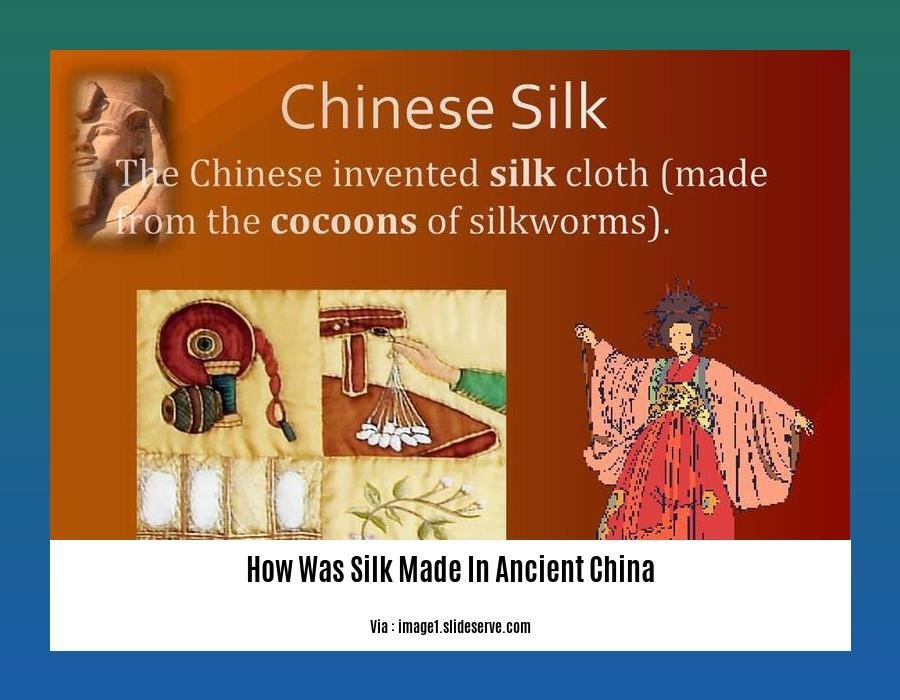
Silk, a symbol of luxury, elegance, and grace, originates from the enigmatic depths of ancient China. Let’s embark on a captivating journey through time to unravel the intricate art of silk production in ancient China.
Sericulture’s Delicate Dance
Silkworms, the heart of silk production, are nurtured with mulberry leaves until they spin cocoons, forming delicate casings of silk.
Silkworm Hatching: Eggs hatch into voracious silkworms that feed on mulberry leaves for four weeks.
Cocoon Formation: As silkworms mature, they spin cocoons around themselves, skillfully weaving silk fibers.
Harvesting Silk Cocoons: Once the cocoons are complete, they are meticulously harvested to begin the silk extraction process.
From Cocoon to Thread: Decoding Silk’s Essence
Steaming Cocoons: Harvested cocoons undergo a gentle steaming process to humanely kill the growing moths within.
Unraveling Silk: Steamed cocoons are placed in hot water, softening the sericin, a natural adhesive that binds silk fibers together.
Drawing Raw Silk: Skilled artisans gently draw the softened silk fibers from the cocoons, creating continuous strands.
Silk Spinning: Drawn silk fibers are twisted and spun into lustrous silk threads, ready for weaving.
Weaving Silk: Transforming Threads into Timeless Elegance
Warp and Weft: Silk threads are arranged in two directions, warp (lengthwise) and weft (widthwise), to create a sturdy fabric.
Loom Mastery: Artisans use intricate looms to interlace warp and weft threads, forming beautiful patterns and designs.
Fabric Finishing: Woven silk undergoes meticulous finishing processes like degumming, washing, and dyeing to enhance its quality and beauty.
Throughout history, silk has captivated hearts with its luxurious texture, vibrant hues, and intricate motifs, transcending time and cultures. Its enduring legacy continues to inspire artists, designers, and fashion enthusiasts globally.
Silk’s Transformative Impact: A Legacy Beyond Fashion
Ancient Trade Routes: Silk played a pivotal role in shaping ancient trade routes, connecting China with the Middle East, Europe, and beyond.
Cultural Exchange: Silk served as a bridge between diverse civilizations, fostering cultural exchange, artistic inspiration, and technological advancements.
Economic Prosperity: Sericulture and silk production significantly contributed to ancient China’s economy, generating wealth and employment.
Imperial Prestige: Silk was reserved for the elite, symbolizing power, status, and luxury in ancient Chinese society.
Symbol of Longevity: Silk’s durability and lustrous sheen made it a symbol of longevity and eternal beauty in ancient Chinese culture.
Preserving Silk’s Legacy: A Journey Through Time
Today, silk production has evolved, embracing modern techniques while preserving ancient traditions. However, the essence of silk’s allure remains unchanged – a timeless tribute to the artistry, ingenuity, and cultural heritage of ancient China.
As we delve into the fascinating world of silk production in ancient China, let’s embrace the opportunity to appreciate the remarkable craftsmanship, cultural significance, and enduring impact of this extraordinary fabric.
In ancient Egypt, they had a distinct way of greeting each other, learn more about it by diving deep into the history of Egypt here: how do you say hello in ancient egyptian.
Words are not enough to convey the emotions attached to them, the same goes for Hello in ancient Egypt, explore how to say hello in ancient egyptian and discover forms of showing respect unique to the Egyptian culture.
In ancient times, tattoos were not just for decoration, they held deep cultural significance, uncover various ancient tattooing techniques and their underlying meanings when you venture into how were tattoos done in ancient times.
Silk Extraction and Spinning: Transforming Silkworm Cocoons into Exquisite Filaments
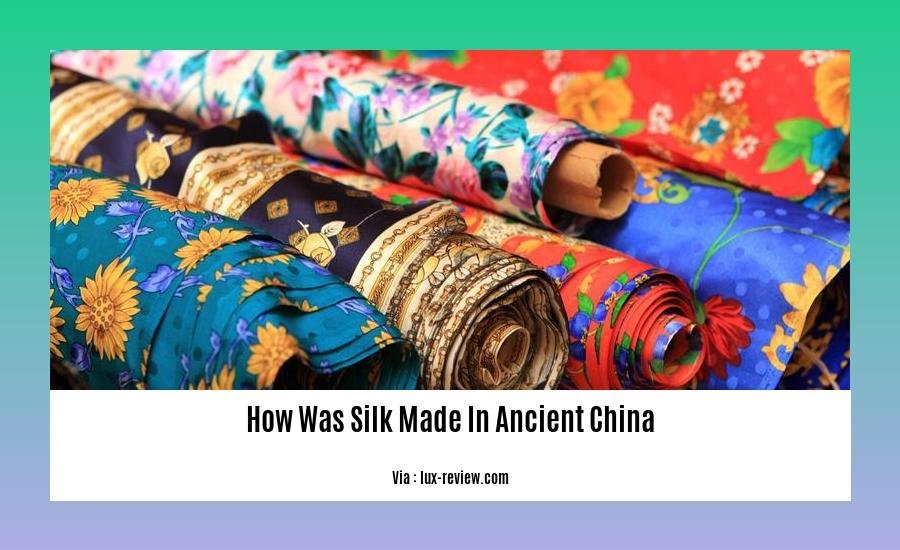
Embark on a journey into the heart of ancient China’s silk-making artistry, where skilled artisans transformed humble silkworm cocoons into exquisite filaments of shimmering silk. This intricate process, a testament to human ingenuity and nature’s wonders, unfolded in several captivating stages:
Key Takeaways:
- Sericulture, the cultivation of silkworms, provided the foundation for silk production in ancient China.
- Silkworms, fed a steady diet of mulberry leaves, spun cocoons, nature’s protective havens for their transformation into moths.
- Skilled artisans employed a delicate touch to extract silk from cocoons, unraveling the silken threads with meticulous care.
- Spinning transformed the extracted silk fibers into continuous threads, ready for weaving into luxurious fabrics.
- Ancient China’s silk industry flourished, shaping trade routes and fostering cultural exchange.
Unveiling the Art of Silk Extraction:
Imagine entering a bustling workshop, filled with the gentle hum of activity as artisans embark on the delicate task of silk extraction. Here, the air is alive with anticipation as they transform nature’s gift into a shimmering treasure.
To begin, they carefully select mature silkworm cocoons, their golden hues a testament to their readiness. In a carefully controlled process, the cocoons undergo a gentle steaming, a crucial step that humanely terminates the metamorphosis process within.
Steps in Silk Extraction:
- Steaming: Cocoons are gently steamed to soften the sericin, a natural glue that binds the silk fibers together.
- Reeling: Skilled artisans submerge the softened cocoons in hot water, using a specialized tool to unwind the delicate silk filaments, creating a continuous strand.
- Stretching: The extracted silk is stretched and twisted, increasing its strength and enhancing its lustrous sheen.
- Drying: The stretched silk is carefully dried, preparing it for the final stage of the spinning process.
Spinning: Weaving Magic from Silk Filaments:
With the silk fibers ready, artisans turn their attention to spinning, a process that transforms the delicate strands into continuous threads. Spinning wheels, the ancient precursors to modern textile machinery, hummed with life as skilled hands guided the silk onto spools, creating skeins of shimmering silk.
Ancient China’s Silk Legacy: A Tapestry of Beauty and Prosperity:
The mastery of silk production in ancient China was not merely a technical feat; it was an art form, a testament to the nation’s cultural heritage. Silk became an integral part of Chinese society, symbolizing wealth, status, and refinement.
Sources:
- Wild Silkworm Cocoon Waste Conversion into Tough Regenerated Silk Fibers
- Structural Characteristics and Properties of Cocoon and Silk Fibroins from Ten Silkworm Strains
Dyeing and Weaving: Infusing Silk with Color and Artistic Elegance
Visualize yourself in the heart of an ancient Chinese silk workshop, surrounded by the vibrant hues of natural dyes and the rhythmic clacking of looms. Join me as we delve into the captivating world of silk dyeing and weaving, uncovering the intricate processes and artistic mastery that transformed the delicate threads of silk into radiant masterpieces.
The Art of Silk Dyeing:
In ancient China, dyeing silk was an art form, a symphony of colors that breathed life into the fabric. Artisans employed two primary methods: acid dyeing and natural dyeing.
Acid dyeing: Using dyes derived from minerals and acids, this technique produced vibrant shades that could withstand repeated washing.
Natural dyeing: Harnessing the power of nature, artisans extracted colors from plants, insects, and minerals. Natural dyes imparted a subtle elegance, with hues ranging from soft pastels to deep, earthy tones.
The Magic of Silk Weaving:
Once dyed, the silk threads were transformed into breathtaking fabrics through the art of weaving. Skilled weavers meticulously interlaced the warp and weft threads on looms, creating intricate patterns and textures.
Looms: Ancient Chinese looms, often made of wood, were marvels of engineering. They allowed weavers to control the tension and alignment of the threads, creating fabrics of exceptional quality and beauty.
Patterns and Designs: Weavers drew inspiration from their surroundings, incorporating motifs of nature, auspicious symbols, and legendary tales into their designs.
Key Takeaways:
Silk dyeing and weaving were integral to China’s rich cultural heritage.
Both dyeing and weaving techniques showcased the creativity and technical prowess of ancient artisans.
Silk’s versatility and beauty made it a symbol of luxury, status, and elegance.
The enduring legacy of silk production continues to inspire contemporary textile artists.
Sources:
The Emergence of Silk Trade Routes: Connecting China with the World
Imagine a time when the world was a vast tapestry of empires and kingdoms, and the desire for exotic goods spurred the birth of a legendary network known as The Silk Trade Routes. This intricate web of paths, spanning from ancient China to the far reaches of the world, transformed the world into a bustling hub of commerce and cultural exchange. At the heart of this bustling network lay the enigmatic treasure – Chinese silk.
Key Takeaways:
- Silk’s Allure: Silk, a precious fabric renowned for its shimmering beauty and luxurious feel, captivated the hearts of people across continents, becoming a symbol of wealth, status, and refined taste.
- China’s Silk Monopoly: China, the birthplace of sericulture, guarded its silk-making secrets closely, giving it a monopoly over the production of this coveted material.
- East Meets West: The Silk Trade Routes served as a conduit for vibrant cultural exchange, facilitating the transmission of knowledge, art, and innovations between civilizations.
- Economic Catalyst: The trade of silk and other commodities along the Silk Road injected life into economies, fostering prosperity and growth in the regions it traversed.
- Silk’s Influence on History: The Silk Trade Routes played a pivotal role in shaping world history, connecting diverse cultures and contributing to the rise and fall of empires.
The Allure of Chinese Silk:
Chinese silk, with its mesmerizing sheen and delicate drape, was more than just a fabric; it was a symbol of elegance and refinement. Its rarity and exquisite quality made it a prized possession among royalty, wealthy merchants, and fashion enthusiasts alike.
China’s Silk Monopoly:
China maintained a tight grip on the secrets of sericulture, the art of silk production. This monopoly allowed China to control the supply of silk, making it a highly sought-after commodity in international trade.
The Silk Trade Routes: A Tapestry of Cultural Exchange:
The Silk Trade Routes were more than just paths for the exchange of goods; they were vibrant arteries of cultural exchange. Along these routes, ideas, technologies, and artistic influences flowed freely, shaping the cultural landscapes of civilizations. The Silk Road facilitated the spread of Buddhism, the introduction of papermaking from China, and the transmission of scientific knowledge from the East to the West.
The Economic Impact of Silk Trade:
The Silk Trade Routes acted as a catalyst for economic growth and prosperity. The exchange of silk and other commodities generated wealth, stimulated trade, and led to the establishment of flourishing markets and trading centers along the routes. Cities and empires grew prosperous as they became hubs of commerce and cultural interaction.
Silk’s Legacy: A Tangible Thread in the Tapestry of History:
The Silk Trade Routes left an indelible mark on world history, connecting civilizations, shaping economies, and influencing cultural developments. It was through these routes that the East and the West forged enduring connections, contributing to the rise and fall of empires, and ultimately weaving a rich tapestry of human history.
Sources:
- The Silk Road – World History Encyclopedia
- Silk Road – Khan Academy
FAQ
Q1: What was the process of sericulture in ancient China?
A1: Sericulture, the process of silk production in ancient China, involved raising silkworms on mulberry leaves, harvesting their cocoons, and unraveling the silk fibers. Silkworms were fed mulberry leaves for a month until they spun cocoons, which were then steamed to kill the growing moth inside and rinsed in hot water to loosen the threads.
Q2: How was white and yellow silk achieved in ancient China?
A2: White silk was obtained by feeding silkworms exclusively with white mulberry leaves, while yellow silk was produced by feeding them wild mulberry leaves in the first half of their life and white mulberry leaves in the second half.
Q3: What was the significance of the Silk Road in ancient China?
A3: The Silk Road was an extensive trade network connecting Eurasia and North Africa, significantly influencing cuisine, art, and technology across different regions. It facilitated cultural exchange and mutual enrichment, extending beyond economic and material exchanges to religious, philosophical, and scientific knowledge sharing.
Q4: What were the different dyeing techniques used for silk in ancient China?
A4: Silk dyeing in ancient China involved techniques such as acid dyeing, direct dyeing, and natural dyeing. Acid dyes were commonly used for vibrant colors, direct dyes for bright colors, and natural dyes derived from plants, minerals, and animals for sustainable and environmentally friendly options.
Q5: What was the cultural significance of silk in ancient China?
A5: Silk held great cultural significance in ancient China, symbolizing luxury, wealth, and status. It was used to create intricate garments, tapestries, and other textiles, showcasing the artistry and ingenuity of Chinese artisans. Silk was also an important commodity in trade, contributing to China’s economic prosperity and cultural influence throughout history.
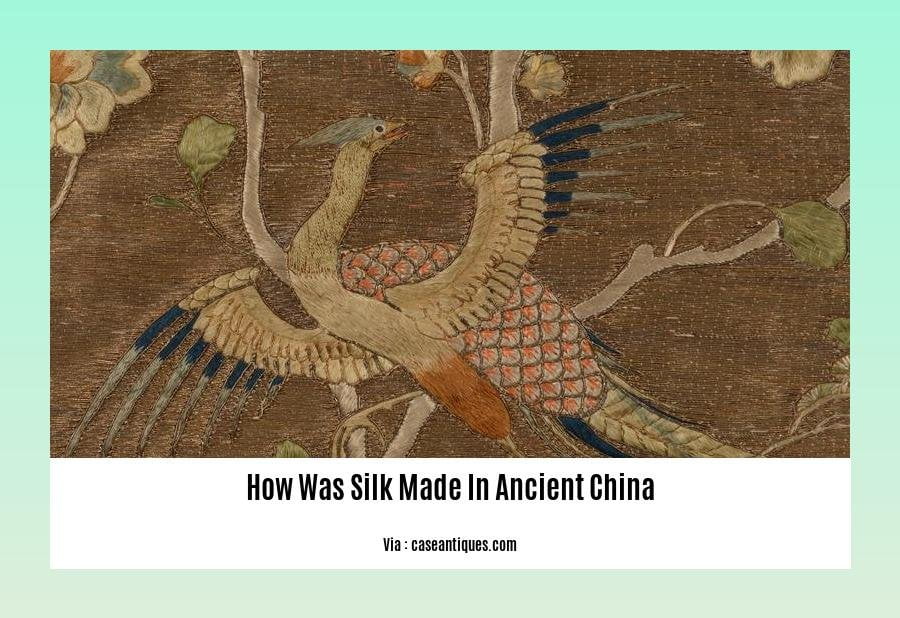
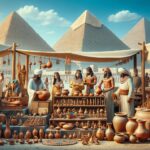
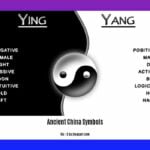
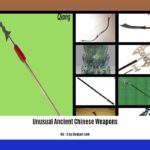

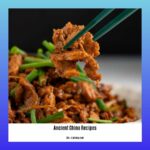
![Excavating the Ancient Marvel: A Historical Study of [Important Port City in Ancient India] important-port-city-in-ancient-india_2](https://www.lolaapp.com/wp-content/uploads/2024/01/important-port-city-in-ancient-india_2-150x150.jpg)


